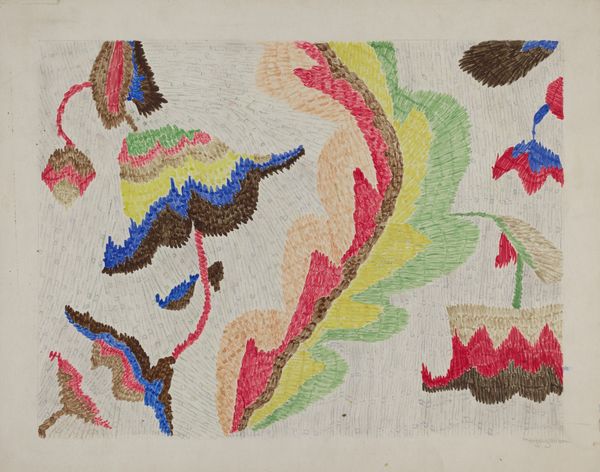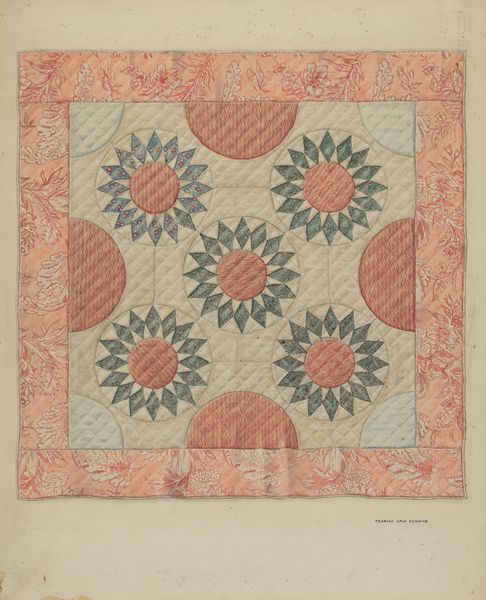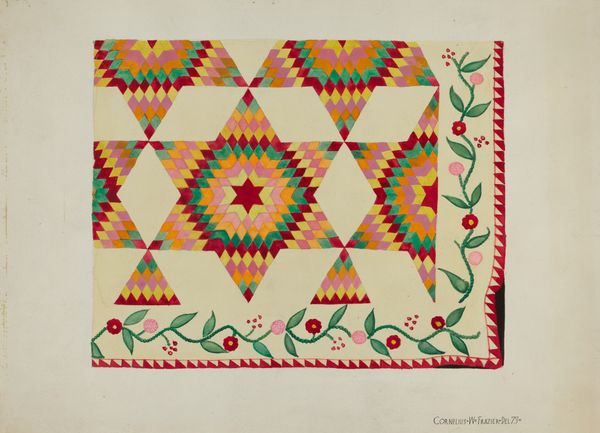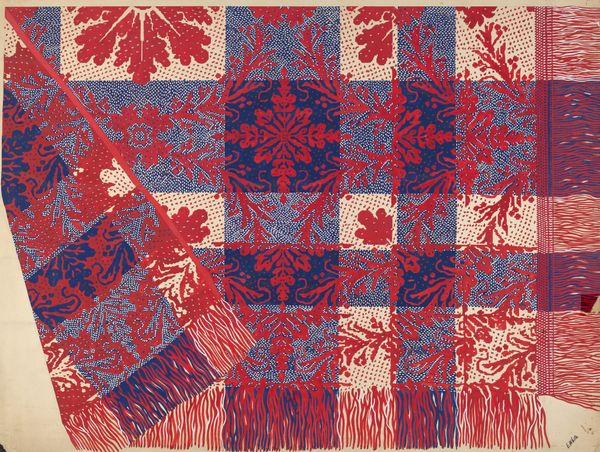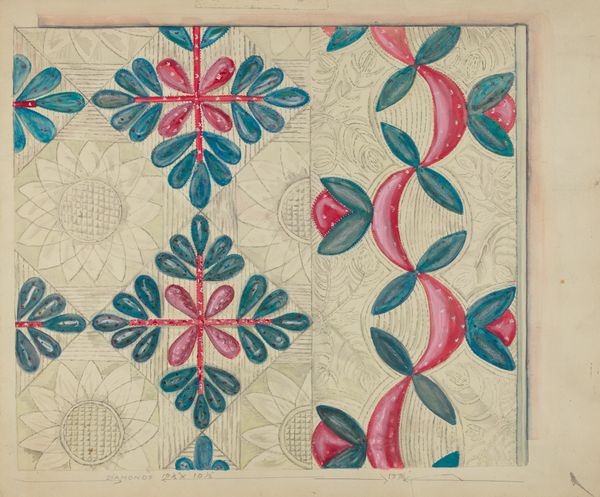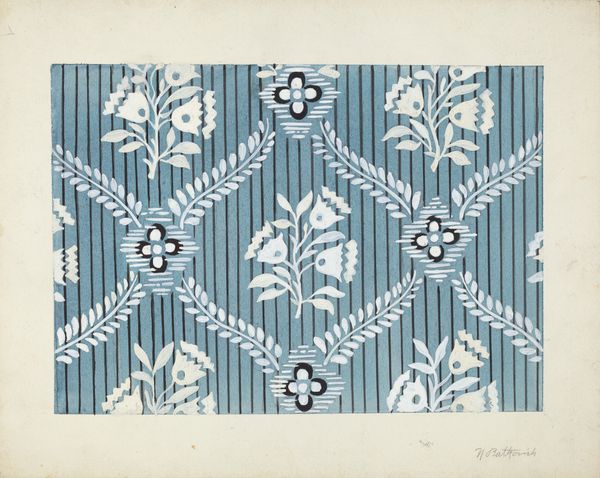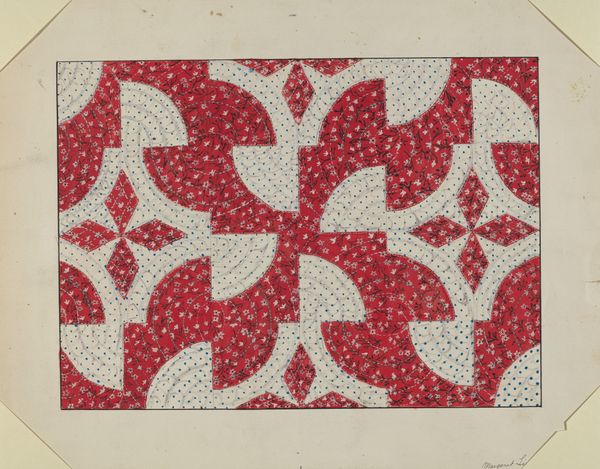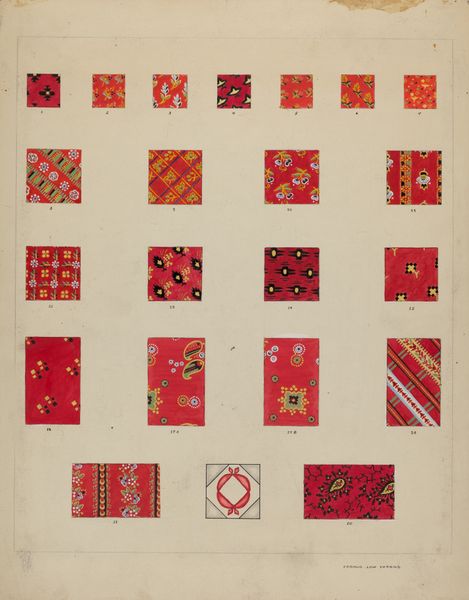
textile
#
folk-art
#
textile
#
folk-art
#
geometric
#
textile design
Dimensions: overall: 31.4 x 42.5 cm (12 3/8 x 16 3/4 in.)
Copyright: National Gallery of Art: CC0 1.0
Curator: What strikes me immediately is how joyful this piece feels—it's a burst of color. Editor: Let's dive in. Here we have LeRoy Robinson’s “Quilt,” likely created around 1938. Robinson appears to be documenting a specific textile with this watercolor and ink drawing. What intrigues me is the explicit labor embedded, the capturing of material, form and pattern. Curator: The use of watercolor to mimic textile is rather uncanny; one can feel the push-pull of color and texture. It's easy to see the work existing at the intersection of Regionalism and American folk art. Does its inherent domesticity impact its presentation and interpretation? Editor: Precisely. It raises essential questions about value: who ascribes worth, and to what end? We see here the tension of high and low art, the commodification, perhaps even the "elevation", of craft by capturing it through a considered drawing. Notice, how watercolor—traditionally a fine art medium—imitates textile; the domestic sphere being brought onto the traditionally male world of the easel. Curator: Do you think this drawing then becomes a sort of record—a mode of preservation through art-making that memorializes folk traditions of the American Southeast? Its date situates it during the end of the depression. Did this mode of artistry bring new cultural capital? Editor: I'd suggest that understanding how and why it was made brings even more layers for the viewer to appreciate. This quilt design, rendered in watercolor, asks us to look closer at labor, skill, and context: an intersection where beauty meets the social reality of its creation. In my reading, this interplay makes for a surprisingly complex work. Curator: The drawing presents a quaint exterior at first glance, but thanks to this materialist perspective, we now grasp the web of societal forces subtly captured in it, making it a poignant cultural document of a moment in history. Editor: Exactly. It's through material investigation that we appreciate its value as social commentary—Robinson capturing craft to give it value on the open art market. Curator: What I will keep thinking about are all of those unknown makers and the long hours it took to cut and assemble their craft and how those makers impact the world of arts as a whole.
Comments
No comments
Be the first to comment and join the conversation on the ultimate creative platform.


